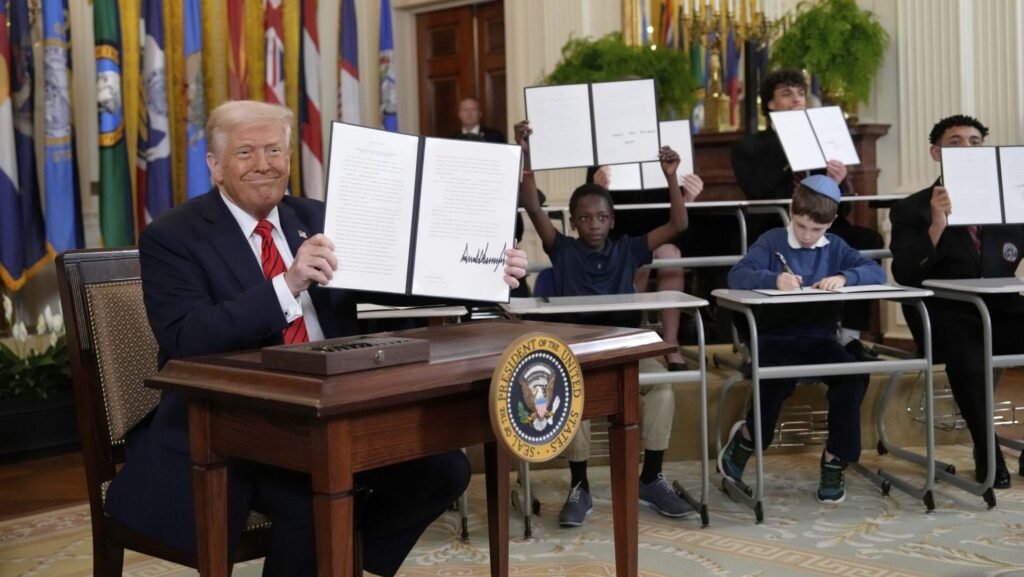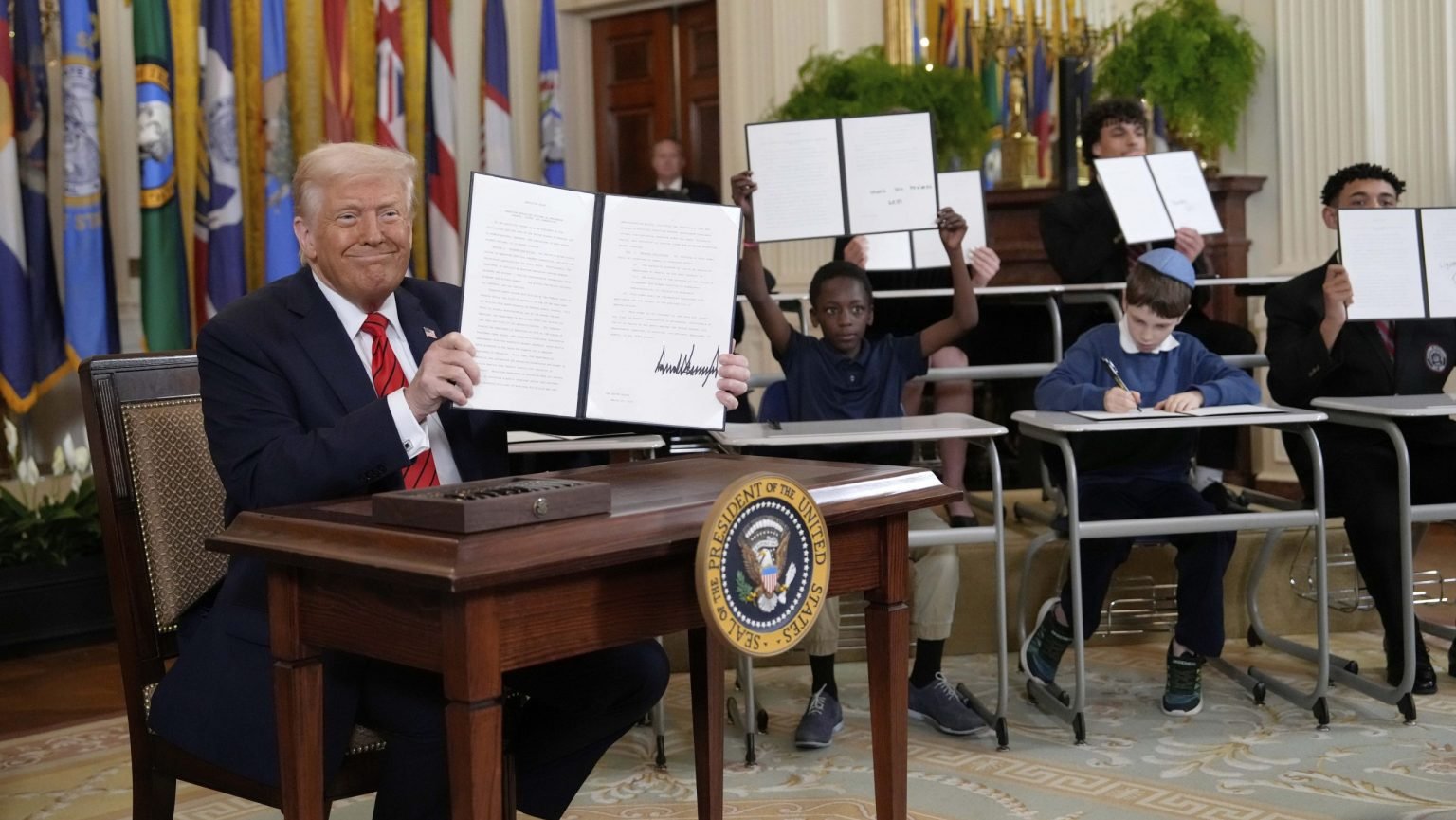
Trump’s latest executive order, signed March 20, 2025, directs the Department of Education to dismantle itself, shifting control to states. Full closure, however, requires congressional approval.
If the Department of Education (DOE) were to close—a very unlikely scenario—the big shake-up would mostly hit funding and policy at the national level. States would have to pick up the slack, and they’d get a lengthy transition period to figure it out.
But you, the everyday teacher?
You’d feel the ripples and nothing too major—at least not right away…..
Education’s already a state and local game, so your world wouldn’t flip upside down overnight. Still, the question on your mind is burning
What will happen to you if the DOE vanishes?
Poof.
Gone.
Let’s walk through it—your classroom, your paycheck, your students, your sanity—step by step.
Will You Still Have a Job?

First off, the big one: your job. Will you still have one?
Yes, you can breathe easy here. You’re not getting a pink slip the second the DOE folds. Why? Your school district, not the feds, cuts your checks. States and local governments call the shots—hiring, firing, setting your salary. The DOE’s closure wouldn’t yank that rug out from under you. Come Monday morning, you’ll still be at your whiteboard, coffee in hand, staring down a room of kids who “forgot” their homework. That doesn’t change.
But don’t get too cozy. The DOE pumps about 8-10% of public school funding nationwide—around $80 billion a year in recent budgets. It’s not the bulk—states and localities cover the other 90%—but it’s a lifeline for key pieces of your workday.
Think Title I grants for low-income schools, IDEA funds for special ed, or those STEM goodies that keep your science lab from looking like a relic. If that cash dries up, you’ll feel it, especially if you teach in a district leaning hard on federal dollars—urban or rural spots, for instance. Fewer aides to help you wrangle the chaos. Textbooks so old they list the Soviet Union as current events. Your one-off requests for supplies? Denied. In wealthier districts, property taxes might cushion the blow for a while. But if you’re in a struggling area, brace yourself.
What Happens to Your Students?

Next up: your kids.
You know the ones who rely on free or reduced lunch?
That’s federal money at work. No DOE could mean no guaranteed funding for those meals unless your state steps in. Hungry students don’t focus—you’ve seen it.
And your special ed kids? IDEA mandates their support, but without federal bucks, some states might cut corners. You’d be left juggling their needs with less help, more forms, and a shrinking budget. Not exactly the dream scenario when you’re already stretched thin.
Your Paycheck: Safe or Shaky?

How about your paycheck?
Trickier to pin down. It’s safe at first—your contract’s locked, and states won’t slash salaries overnight. But if federal funds vanish and your state doesn’t plug the hole, cuts will sneak in. No raises this year. Maybe smaller ones next time. If your district’s already scraping by, they might freeze hiring, leaving you with bigger classes. Want a class of 35 next year?
You’d manage—you’re a pro—but it’s not fun. Some teachers will leave, taking years of experience with them. Worse, if families flee to “better” districts, enrollment drops. Fewer students, fewer teaching slots. Your job’s safe… until it isn’t. That’s a slow burn, not an instant crisis, but it’s real.
Your Daily Grind: Freedom or Chaos?

What about your day-to-day? Without the DOE, states take full control. And it could go in two directions.
If you’re lucky less federal red tape could be liberating. Teach what your kids actually need, not some test. Nice, right?
If you’re unlucky states could go overboard in the vacuum of regulations. New rules, new tests, new migraines.
Fifty states, fifty systems. Moving across state lines? Good luck—you’d need a crash course in a whole new rulebook. Your workload could yo-yo depending on where you teach. Consistency? Forget it.
The Political Mess and Your Classroom

Now, the fun part: politics. Some folks would cheer the DOE’s demise, calling it bloated and meddlesome. They’ve got a point—big systems can turn inefficient or worse over time. If they win, you might get a perk: less oversight, more room to breathe. Ditch the canned curriculum and teach what lights you up. But others say the DOE’s a safety net. Without it, the gap between rich and poor schools—those shiny laptops versus flickering lights—could explode. You’ve seen that divide. Where you teach decides how hard it hits you.
The Bottom Line for You
So, what’s the verdict? You’ll still trudge in on Monday, shaping minds like always. Your job doesn’t vanish day one. But the tools you use, the support you get, the kids you reach—they could shift. If your state’s got cash and grit, you might coast. If not, you’re in for a fight—more with less, your usual gig on steroids. Chaos? A bit. Total collapse? Nah—the system’s too stubborn, too decentralized. You’d weather it because you’re built for this. Still, it’s fair to wonder: how much more can they heap on you before something snaps?
What do you think—any of this strike a nerve? Your classroom’s your world; I’d bet you’ve got thoughts.


